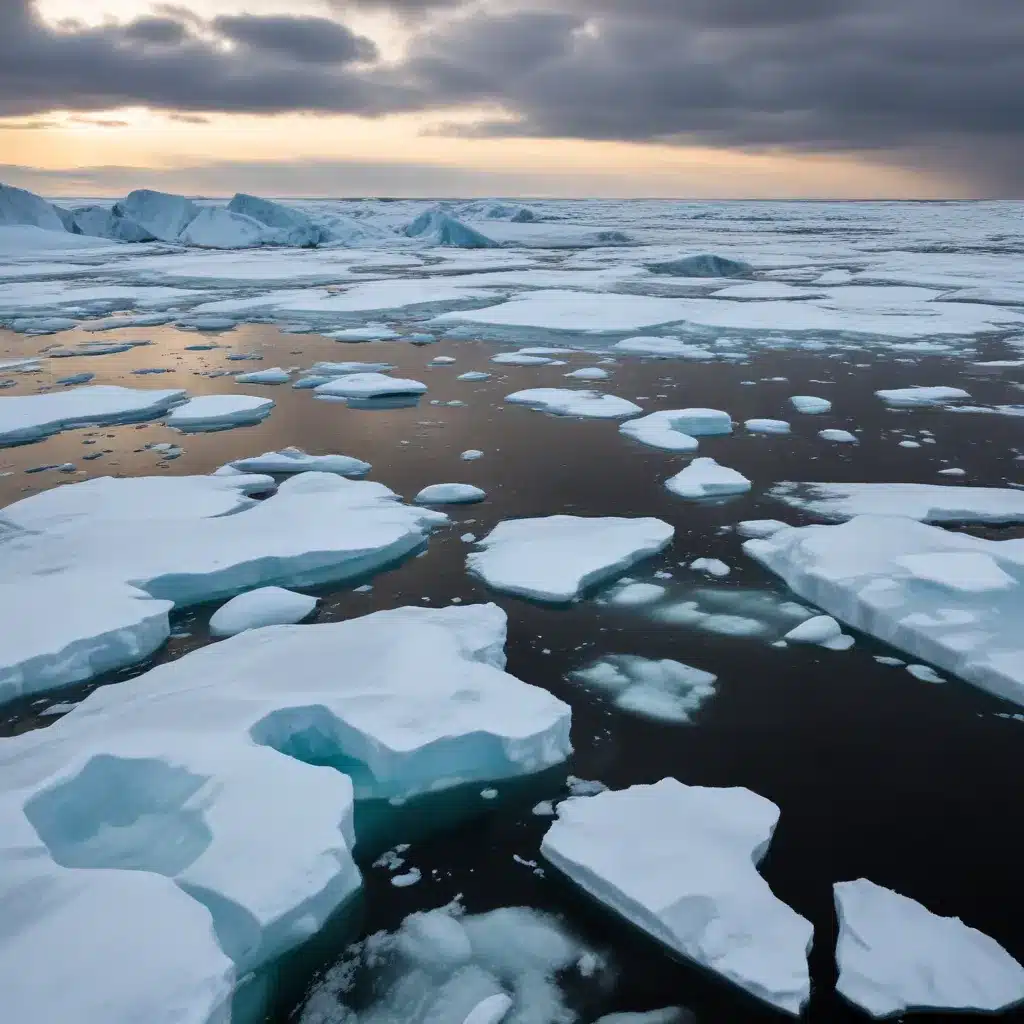
Understanding the relationship between sea ice, clouds and radiation
Climate warming has a stronger impact on Arctic climate and sea ice cover (SIC) decline than previously thought. Better understanding and characterization of the relationship between sea ice, clouds and the implications for surface radiation is key to improving our confidence in Arctic climate projections.
Here we analyze the relationship between sea ice, cloud phase and surface radiation over the Arctic, defined as north of 60°N, using active- and passive-sensor satellite observations from three different datasets. We find that all datasets agree on the climatology of and seasonal variability in total and liquid-bearing (liquid and mixed-phase) cloud covers. Similarly, our results show a robust relationship between decreased SIC and increased liquid-bearing clouds in the lowest levels (below 3 km) for all seasons (strongest in winter) but summer, while increased SIC and ice clouds are positively correlated in two of the three datasets.
A refined map correlation analysis indicates that the relationship between SIC and liquid-bearing clouds can change sign over the Bering, Barents and Laptev seas, likely because of intrusions of warm air from low latitudes during winter and spring. Finally, the increase in liquid clouds resulting from decreasing SIC is associated with enhanced radiative cooling at the surface. Our findings indicate that the newly formed liquid clouds reflect more shortwave (SW) radiation back to space compared to the surface, generating a cooling effect on the surface, while their downward longwave (LW) radiation is similar to the upward LW surface emission, which has a negligible radiative impact on the surface. This overall cooling effect should contribute to dampening future Arctic surface warming as SIC continues to decline.
Datasets and methods
We use cloud observations from three different datasets that discriminate between liquid, ice and mixed-phase clouds:
-
DARDAR: This dataset is constrained to the years 2007–2010 and is based on CloudSat–CALIPSO retrievals.
-
PHACT: This is a new dataset based on CALIPSO-GOCCP that documents all liquid, mixed-phase and ice-only clouds from 2007 to 2020.
-
CERES: This is a passive-sensor satellite dataset based on MODIS retrievals that also provides surface flux retrievals.
After describing the datasets, we show their climatology of the different Arctic cloud types for all seasons. We then perform a correlation analysis of the SIC with all cloud types. Additionally, we focus on the vertical structure of these cloud types as a function of sea ice conditions. Finally, we investigate the radiative impact of these clouds at the surface.
Cloud climatology and correlation with sea ice
All three satellite datasets depict a similar pattern and seasonal variability in total and liquid-bearing cloud covers. DARDAR diagnoses far more ice clouds with distinct seasonal variability compared to PHACT and CERES.
The strong negative correlation between Arctic cloud cover and sea ice cover (SIC) is primarily driven by liquid-bearing clouds from the lowest levels (i.e., below 3 km), for which mixed-phase clouds account for 27% in PHACT and 50% in DARDAR. This relationship is robust among all satellite observations for all seasons but summer, which is consistent with findings from previous studies.
Unlike in other studies, we find slightly stronger negative correlations between liquid-bearing clouds and SIC during winter than fall, which could be due to winter lower temperatures that make it more difficult for liquid-bearing clouds to form over sea ice. Additionally, our seasonal maps of correlation reveal the presence of regional differences, which may be driven by local processes and synoptic circulation. In particular over the Bering, Barents and Laptev seas, winter and spring intrusions of low-latitude warm air change the sign of the correlation between liquid cloud cover and SIC.
Furthermore, we show that ice-only clouds (DARDAR and PHACT) also correlate well with SIC on average (with some variability depending on the season), which has not been previously reported in the literature.
Radiative impact of cloud changes
The increase in liquid-bearing clouds with open-ocean conditions – and to some extent the decrease in ice clouds – is associated with more radiative cooling from clouds at the surface, attributable to a larger SW CRE cooling than LW CRE warming. Such a cooling effect is found in all seasons but winter, when the LW CRE warming exceeds the SW CRE cooling.
A brief analysis of surface flux and SIC anomalies confirms that in response to SIC decrease, liquid-bearing clouds increase, and their associated radiative effect is a cooling of the surface driven by the SW component. In response to climate warming, Arctic SIC has been declining and will most likely continue to do so in the future, with ice-free summers that could occur as early as 2030. Within this context, it is important to quantify the effect of sea ice loss on clouds, which are a major contributor to the surface radiative budget.
Our analysis suggests that optically thick low-level liquid clouds will be more frequent as SIC declines, and this process should contribute to mitigating Arctic surface warming, except in winter. These results could be used to assess the SIC–cloud relationship in climate models, which still struggle to represent the cloud-phase transition, and thereby help narrow down the large uncertainties in their representation of Arctic amplification.
The PHACT, DARDAR and CERES datasets used in this study can be accessed at the following links:
- PHACT dataset
- DARDAR dataset
- CERES datasets












